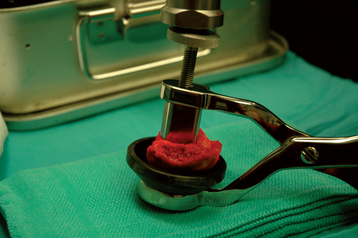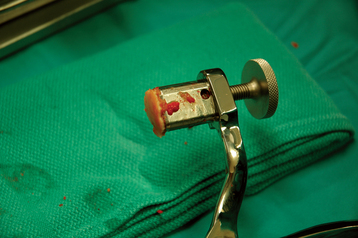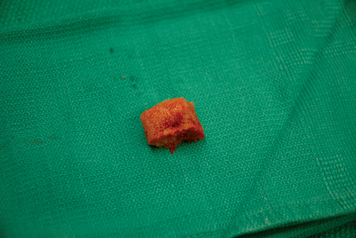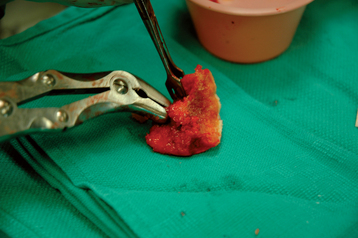CHAPTER 21 Tuberosity Reduction and Fixation
Greater and lesser tuberosity complications are primary obstacles to achieving a satisfactory result after unconstrained arthroplasty for the treatment of proximal humeral fractures.1 Tuberosity malunion and nonunion are situations to be avoided. The first step in avoiding these complications is placement of the tuberosities at their correct anatomic location through proper preoperative planning and accurate humeral prosthetic positioning (Chapters 18 and 20). The second step in avoiding these complications is through tuberosity fixation. Tuberosity fixation consists of two major components: use of a reliable and reproducible suture fixation technique to provide initial fracture stability, and use of bone graft to assist in tuberosity healing and provide long-term fracture stability. This chapter details our preferred tuberosity fixation technique and the use of bone graft to enhance tuberosity position and healing.
PREPARATION OF BONE GRAFT
A specially designed bone graft cutter is used to harvest bone graft plugs from the humeral head fragment. The thumbscrew of the bone graft cutter is completely recessed, and the cutting edge is advanced through the humeral head from cancellous surface to articular surface with a mallet (Figs. 21-1 and 21-2). After the cutting edge of the bone graft cutter has been advanced completely through the humeral head, the remaining humeral head is removed from the cutter and preserved. The thumbscrew of the bone graft cutter is advanced slightly to extrude just the portion of the bone graft plug covered with articular cartilage (Fig. 21-3). The articular cartilage is removed from the bone graft plug with a large biting rongeur (Fig. 21-4). The bone graft plug is then fully extruded from the bone graft cutter (Fig. 21-5). This process is repeated for a second bone graft plug.
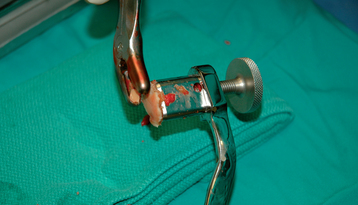
Figure 21-4 The articular cartilage is removed from the bone graft plug with a large biting rongeur.
The remaining cancellous bone in the humeral head fragment is removed with a large biting rongeur and morselized (Fig. 21-6). Care is taken to not include articular cartilage in the morselized bone graft. One of the bone graft plugs is gently impacted into the fenestration of the humeral prosthesis that had previously been cemented into place, as described in Chapter 20 (Fig. 21-7).
Stay updated, free articles. Join our Telegram channel

Full access? Get Clinical Tree



